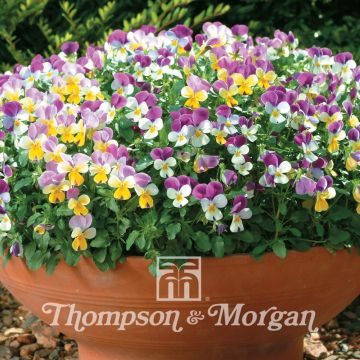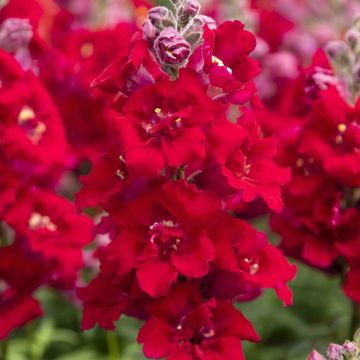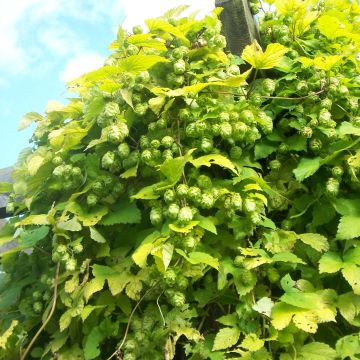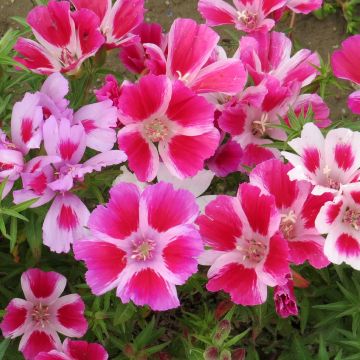

Viola sororia Freckles Seeds - Common blue violet


Viola sororia Freckles Seeds - Common blue violet
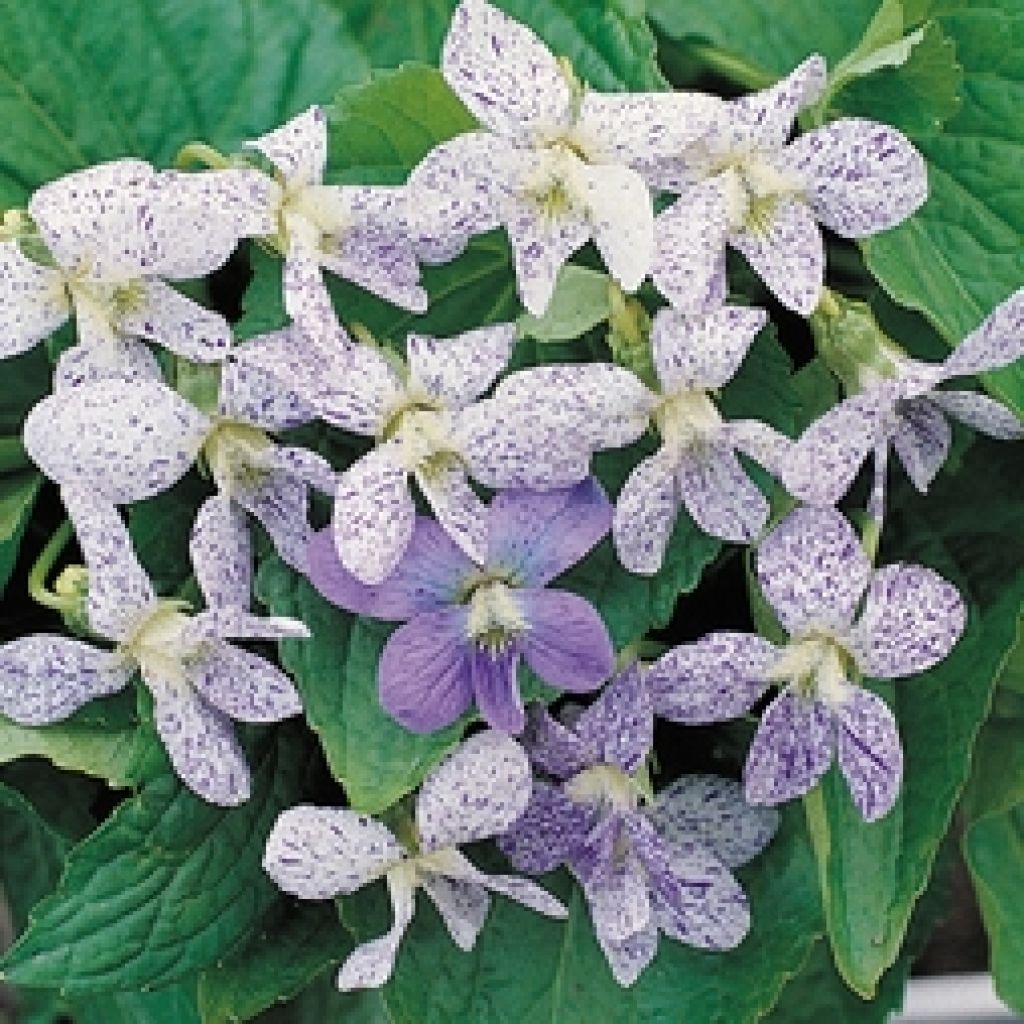

Viola sororia Freckles Seeds - Common blue violet
Viola sororia Freckles Seeds - Common blue violet
Viola sororia Freckles
Woolly blue violet, North American woolly violet, Meadow violet
The information you provide about this young plant is very accurate. I have been cultivating it in my garden for about twenty years. It was purely by chance that I found seeds in a garden center. It truly deserves our attention. Maximum rating 5. Well done for spreading it. Kind regards, jp.denizot@yahoo.com
Jean-Pierre, 18/01/2019
Special offer!
Receive a €20 voucher for any order over €90 (excluding delivery costs, credit notes, and plastic-free options)!
1- Add your favorite plants to your cart.
2- Once you have reached €90, confirm your order (you can even choose the delivery date!).
3- As soon as your order is shipped, you will receive an email containing your voucher code, valid for 3 months (90 days).
Your voucher is unique and can only be used once, for any order with a minimum value of €20, excluding delivery costs.
Can be combined with other current offers, non-divisible and non-refundable.
Why not try an alternative variety in stock?
View all →This plant carries a 6 months recovery warranty
More information
We guarantee the quality of our plants for a full growing cycle, and will replace at our expense any plant that fails to recover under normal climatic and planting conditions.
Would this plant suit my garden?
Set up your Plantfit profile →
Description
Viola sororia 'Freckles' is a ravishing variety of a robust North American violet with purple speckled flowers, that performs well in most climates. It is very much a perennial and forms beautiful mats of small, clean-cut, juxtaposed clumps over time. In spring, this carpet of dark green, glossy leaves is animated by a multitude of small white flowers, randomly splashed with purple, which are very luminous in the shady areas where it likes to bloom. Fully hardy, very long-lived and undemanding, it is able to grow anywhere, even in the dry soil at the foot of trees. Create beautiful, maintenance-free borders with this violet!
Viola sororia of the family Violaceae, is native to the Northeast of the United States and to Canada, where it is found in forests, but also in meadows, on slopes and along roadsides. It also bears the names common blue violet, Viola cucullata, North American woolly violet, wood violet, meadow violet, purple violet, hooded violet... It is the North American equivalent of our pale wood violet and differs in its larger clumps whose large branched rhizomes do not produce runners.
The cultivar 'Freckles' differs from the type species in the colour of its flowers. It is a perennial plant that colonizes and spreads out over the soil with large, fleshy rhizomes that run along on the surface of the ground, quickly forming big, dense mats reaching 10 to 15 cm high. The leaves and flowers emerge directly from the rhizomes and form a basal rosette. The beautiful, shiny, dark green leaves are 7 cm long and 7 cm wide and are often heart-shaped with toothed edges. It blooms for 4 to 6 weeks, from mid-March to June, depending on the region and climate. Each flower is 1.5 cm in diameter, consists of 5 petals and is equipped with a lower petal that forms a spur. The flowers are nectar-rich, but not fragrant. This violet self-seeds quite readily in the garden and can be divided just as easily by separating the small clumps. The deciduous foliage disappears in winter.
Viola sororia Freckles adapts to both heavy and light soils and grows preferably in shade or partial shade, even under tall trees or at the foot of hedges, where it can withstand the competition from neighbouring roots. It is a carefree plant that will thrive from the north to the south of our country: it resists harsh winters and tolerates dry soils in summer, in the shade, by going dormant and losing all its foliage. It is suitable for use on the edges of undergrowth or groves, as well as in partially shaded borders. Combine it with the white Cyclamen coum, primrose, liverworts or Brunnera macrophylla 'Looking Glass', for example. It can also be planted in a lawn (it sometimes self-seeds spontaneously), as long as it is not mowed too often or mowed too short in the spring.
Violets and pansies are part of the genus Viola. How to differentiate a violet from a pansy? By the arrangement of their petals: the first has two upright petals and three petals facing downwards, the second has four upright petals, the fifth is larger than the others and points downward. Violets are almost all native to the temperate regions of the globe. The vast majority of them are perennials, but large-flowered hybrids are sold and used as annuals.
Viola sororia Freckles Seeds - Common blue violet in pictures


Flowering
Foliage
Plant habit
Botanical data
Viola
sororia
Freckles
Violaceae
Woolly blue violet, North American woolly violet, Meadow violet
North America
Other Violet seeds
View all →Planting and care
Sow the violet 'Freckles' in a box or tray, from spring to autumn, in a special seed compost. Plants sown in spring produce flowers in early summer, while those sown in summer and autumn bloom in winter or the following spring.
Place the seed tray or boxes in a mini-greenhouse at a temperature of 15-20 °C, or seal it in a polythene bag. Keep the soil moist but not wet. Take care not to provide too high a temperature, as this can inhibit germination. Do not exclude light as this promotes germination, which usually takes 14-21 days.
When the seedlings are large enough to handle, prick them out into 8 cm pots and grow on in cooler conditions until they are sturdy enough to be planted out. Once they are big enough and all risk of frost has passed, acclimatize them to outdoor conditions for 7 to 10 days. Transplant in well-prepared soil, in partial shade.
Cultivation :
Grow Viola sororia in partial shade or in positions exposed only to the morning sun. It is very undemanding in terms of soil, tolerating heavy, light, acid, neutral and even slightly calcareous soils. This species is adapted to dry soils in summer: under the trees, the soil is often dry on the surface, whatever the region. Water regularly the first year, but not excessively. During dry periods, its leaves may disappear, the plant go dormant. Removing old foliage will allow new foliage to appear as soon as the rains return.
Sowing period
Intended location
Planting & care advice
-
, onOrder confirmed
Reply from on Promesse de fleurs
Similar products
Haven't found what you were looking for?
Hardiness is the lowest winter temperature a plant can endure without suffering serious damage or even dying. However, hardiness is affected by location (a sheltered area, such as a patio), protection (winter cover) and soil type (hardiness is improved by well-drained soil).

Photo Sharing Terms & Conditions
In order to encourage gardeners to interact and share their experiences, Promesse de fleurs offers various media enabling content to be uploaded onto its Site - in particular via the ‘Photo sharing’ module.
The User agrees to refrain from:
- Posting any content that is illegal, prejudicial, insulting, racist, inciteful to hatred, revisionist, contrary to public decency, that infringes on privacy or on the privacy rights of third parties, in particular the publicity rights of persons and goods, intellectual property rights, or the right to privacy.
- Submitting content on behalf of a third party;
- Impersonate the identity of a third party and/or publish any personal information about a third party;
In general, the User undertakes to refrain from any unethical behaviour.
All Content (in particular text, comments, files, images, photos, videos, creative works, etc.), which may be subject to property or intellectual property rights, image or other private rights, shall remain the property of the User, subject to the limited rights granted by the terms of the licence granted by Promesse de fleurs as stated below. Users are at liberty to publish or not to publish such Content on the Site, notably via the ‘Photo Sharing’ facility, and accept that this Content shall be made public and freely accessible, notably on the Internet.
Users further acknowledge, undertake to have ,and guarantee that they hold all necessary rights and permissions to publish such material on the Site, in particular with regard to the legislation in force pertaining to any privacy, property, intellectual property, image, or contractual rights, or rights of any other nature. By publishing such Content on the Site, Users acknowledge accepting full liability as publishers of the Content within the meaning of the law, and grant Promesse de fleurs, free of charge, an inclusive, worldwide licence for the said Content for the entire duration of its publication, including all reproduction, representation, up/downloading, displaying, performing, transmission, and storage rights.
Users also grant permission for their name to be linked to the Content and accept that this link may not always be made available.
By engaging in posting material, Users consent to their Content becoming automatically accessible on the Internet, in particular on other sites and/or blogs and/or web pages of the Promesse de fleurs site, including in particular social pages and the Promesse de fleurs catalogue.
Users may secure the removal of entrusted content free of charge by issuing a simple request via our contact form.
The flowering period indicated on our website applies to countries and regions located in USDA zone 8 (France, the United Kingdom, Ireland, the Netherlands, etc.)
It will vary according to where you live:
- In zones 9 to 10 (Italy, Spain, Greece, etc.), flowering will occur about 2 to 4 weeks earlier.
- In zones 6 to 7 (Germany, Poland, Slovenia, and lower mountainous regions), flowering will be delayed by 2 to 3 weeks.
- In zone 5 (Central Europe, Scandinavia), blooming will be delayed by 3 to 5 weeks.
In temperate climates, pruning of spring-flowering shrubs (forsythia, spireas, etc.) should be done just after flowering.
Pruning of summer-flowering shrubs (Indian Lilac, Perovskia, etc.) can be done in winter or spring.
In cold regions as well as with frost-sensitive plants, avoid pruning too early when severe frosts may still occur.
The planting period indicated on our website applies to countries and regions located in USDA zone 8 (France, United Kingdom, Ireland, Netherlands).
It will vary according to where you live:
- In Mediterranean zones (Marseille, Madrid, Milan, etc.), autumn and winter are the best planting periods.
- In continental zones (Strasbourg, Munich, Vienna, etc.), delay planting by 2 to 3 weeks in spring and bring it forward by 2 to 4 weeks in autumn.
- In mountainous regions (the Alps, Pyrenees, Carpathians, etc.), it is best to plant in late spring (May-June) or late summer (August-September).
The harvesting period indicated on our website applies to countries and regions in USDA zone 8 (France, England, Ireland, the Netherlands).
In colder areas (Scandinavia, Poland, Austria...) fruit and vegetable harvests are likely to be delayed by 3-4 weeks.
In warmer areas (Italy, Spain, Greece, etc.), harvesting will probably take place earlier, depending on weather conditions.
The sowing periods indicated on our website apply to countries and regions within USDA Zone 8 (France, UK, Ireland, Netherlands).
In colder areas (Scandinavia, Poland, Austria...), delay any outdoor sowing by 3-4 weeks, or sow under glass.
In warmer climes (Italy, Spain, Greece, etc.), bring outdoor sowing forward by a few weeks.


































